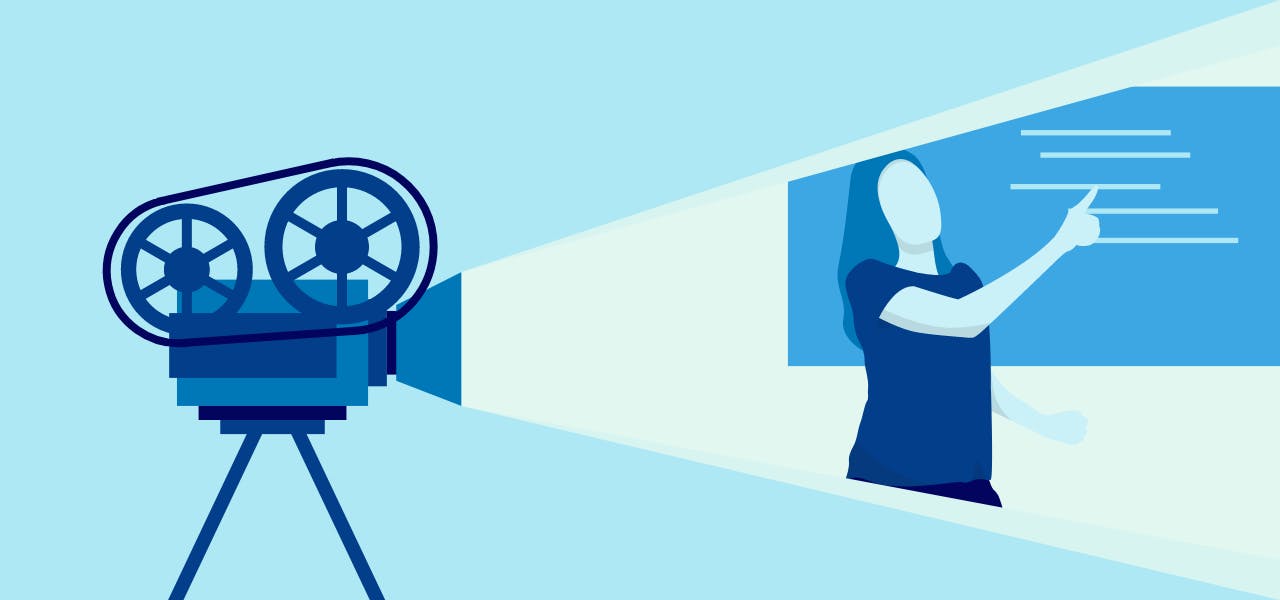Living in a world where a pandemic changed the entire structure of our daily living has had major consequences on how we perceive things we once argued or took for granted. For example, pre-recorded lectures by professors would have been an issue of an ethical violation of integrity in the past. But now, with the struggle to balance safety and education in ways never before imagined, instructors are encouraged to not only create pre-recorded lectures, but to get training on how to improve them!
The shift to virtual learning and acceptance of pre-recorded lessons have been a learning curve for students and teachers. As more professors take on remote instruction roles and learners appreciate the flexibility of recorded information to access on-demand instead of live, everyone must adjust to holding themselves accountable and becoming self-motivated. While students have the lion’s share of being self-disciplined, there are ways that professors can enhance their instruction through pre-recorded lectures to assist in maximizing student outcomes as much as possible.
The Benefits of Pre-Recorded Lectures vs. Live Lessons
Remote learning isn’t going away. In fact, it’s in demand now more than ever, even with students who have the option of returning to campus settings.
The benefits of pre-recorded lessons to be able to access on the student’s schedule gives learners control they never had before. Whereas up until recently, the ability for a college student to obtain and maintain gainful employment relied on the manager’s willingness to adapt around their school schedule, now they can seek out the best jobs instead of their only choices. The school schedule can be worked successfully around work and not the other way around, allowing learners to make a living and get an education.
Academic professors also benefit from the opportunity to teach via pre-recorded lectures rather than live, in-person lessons. As a scholar and a researcher, instructors are pulled in dozens of directions at any time. Being able to use pre-recorded lectures lets them engage in the instructional practice when it is convenient for them, even with back-to-back lessons to keep the flow going from one transition to the next.
Preparing for Your Recording Session
If you’re considering pre-recorded lessons as your pedagogical strategy, preparation is key. What you say and do during the lesson is important, of course, but it will all run much smoother if you set the scene ahead of time.
Most pre-recorded lessons are going to be video-based. Your students will be watching you, so you want to look organized and prepared. To do this, you can use an outline of what you want to say, write talking points on the board behind you, and create a slideshow with your script. Make sure you practice what you’re going to say on camera. Don’t wing it or you might find yourself running way too long or too short. In person, a class session might be an hour long. But as a video, twenty minutes to half an hour is frequently sufficient.
Check the location you’re recording in, too. Keep all personal information out of the backdrop. A good suggestion is to hang a bedsheet behind you if you’re not in your classroom. Get your materials ready and on hand before you start recording.
Tips to Improve Your Teaching From a Distance
There has been a lot of feedback from professors and learners as to how to improve the instruction of pre-recorded lessons. These tips can help you maximize the time you have with your students’ attention without being in their presence:
● Use Zooms and Webex lives but do so sparingly, understanding that time differences and schedules make it difficult for many students to attend lives
● Make sure any background noise is muted
● Encourage questions through multiple formats, including texts (you can use different apps to generate a unique phone number so you don’t have to give out your personal digits)
● Keep in mind that you’re still role modeling things like eye contact and correct posture
● Don’t stand still, but don’t move around too much
● Use the slides as a guide but let your conversation flow
● Don’t let mistakes stop you from moving forward with your point, just as it wouldn’t in the classroom
● Give yourself a few seconds at the end of your recording to look straight into the camera before you shut it off so you can cut out any excess movement
These suggestions will greatly improve the quality of your pre-recorded lessons. These shouldn’t be any more stressful than a live lesson, and since you can delete and start over, they actually might be more enjoyable!
